Chanda Mama Counts the Stars NCERT Solutions | English for Class 3 (Santoor) PDF Download
| Table of contents |

|
| Let us think |

|
| Let us learn |

|
| Let us listen |

|
| Let us write |

|
| Let us do |

|
Let us think
[Page no112]
A. Answer the following.
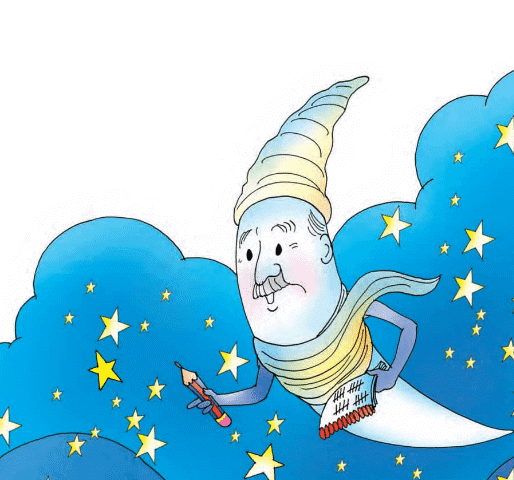
1. Does the Moon look the same every night?
Ans: No, we see the varying sizes of the moon every night.
2. What did Chanda Mama try to count?
Ans: The Chanda Mama tried to count the number of stars.
3. Why did Chanda Mama fall asleep?
Ans: Counting the number of stars in the sky. Chanda Mama got tired and started yawning and fell asleep. 4. Who helped Chanda Mama?
4. Who helped Chanda Mama?
Ans: The Sun helped Chanda Mama.
5. Complete the sentence:
The number of stars in the sky is the same as __________
Ans: The number of stars in the sky is the same as the number of lovely children.
B. Think and say.

1. I call the Moon, Chanda Mama. What do you call him in your language?
Ans: In different Indian languages, people lovingly refer to the Moon in various ways. Here are a few examples:
- Hindi: Chanda Mama (चंदा मामा) – “Uncle Moon”
- Bengali: Chand Mama (চাঁদ মামা)
- Tamil: Chandiran Mama (சந்திரன் மாமா)
- Telugu: Chanda Mama (చందమామ)
- Marathi: Chanda Mama (चंदा मामा)
- Gujarati: Chand Mama (ચાંદ મામા)
- Punjabi: Chann Mamma (ਚੰਨ ਮਾਮਾ)
- Urdu: Chaand Mian (چاند میاں) – “Mr. Moon”
Even in English, children might call him "Mr. Moon" or "Uncle Moon" playfully.
2. Chanda Mama was not able to count the stars. What things can you not count?
Ans: I cannot count the trees and plants, the birds, the animals, the people, the shops, the vehicles, the ants, and many more things.
3. The Moon is visible during the night. What can you see in the night sky?
Ans: Along with the moon, we can see the stars in the night sky.
Let us learn
[Page no114]
Here and There!
Look at the following sentences.
We are here on the Earth. The Moon is there in the sky. I have a sharpener here in my pencil box.
I have a sharpener here in my pencil box.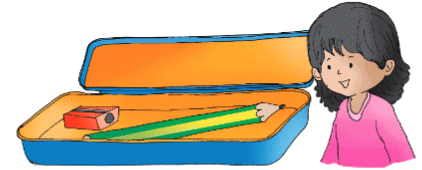 The crayons are there in the big box.
The crayons are there in the big box.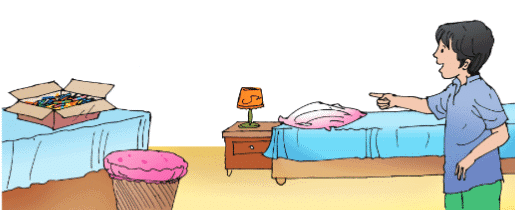 The underlined words in both sentences tell us about the location of the ‘sharpener’ and ‘crayons’. The distance of the objects from the speaker helps us in choosing between the words ‘here’ and ‘there’.
The underlined words in both sentences tell us about the location of the ‘sharpener’ and ‘crayons’. The distance of the objects from the speaker helps us in choosing between the words ‘here’ and ‘there’.
We use ‘here’ to tell the location of things that are near us. Similarly, ‘there’ is used to tell the location of things that are far from us.
Fill in the blanks with ‘here’ or ‘there’.
One has been done for you.
1. The students are playing kabaddi there.

Ans: The students are playing kabaddi there.
2. _______________ is your shirt.

Ans: Here is your shirt.
3. _______________ is my bicycle.

Ans: There is my bicycle.
4. I went to Chandigarh last year. My brother lives _______________.

Ans: I went to Chandigarh last year. My brother lives there.
5. This is my bench. I sit _______________ with my friends.

Ans: This is my bench. I sit here with my friends.
Let us listen
[Page no 115]
A. In the story, we read that the stars were too many to be counted. Now, your teacher will read out a list of items for you. Put the items in the correct column in the given table.
Now, your teacher will read out a list of items for you. Put the items in the correct column in the given table.
1. Children in the classroom.
2. Flowers in a garden.
3. Books in the library.
4. Pencils in your pencil box.
5. Fingers on your right hand.
6. Children in your city or town.
7. Pages in your English notebook.
8. The hairs on your head.
Ans: 
Let us write
[Page no 116]
A. It was a full moon night. Children had come out to see the Moon. Complete the conversation they had by picking the words from the help box.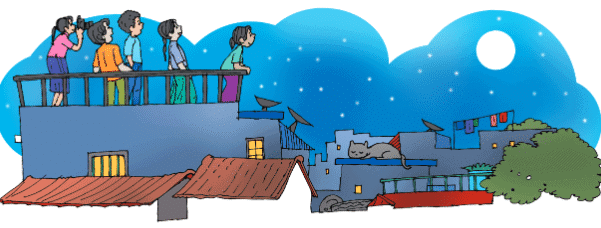 Govind: Wow, look!
Govind: Wow, look!Safura: The moon looks so big and bright.
Sukanya: Isn’t it?
Dhruv: My grandfather _______________________________.
Ramani: Let us take a picture.
Safura: My mother has ________________________________.
Dhruv: Come. Stand here and ____________________________.
Govind: The moon is __________________________________.
Help Box

Ans: Govind: Wow, look!
Safura: The moon looks so big and bright.
Sukanya: Isn’t it?
Dhruv: My grandfather says the full moon looks very beautiful.
Ramani: Let us take a picture.
Safura: My mother has a camera for the pictures.
Dhruv: Come. Stand here and let’s take a picture.
Govind: The moon is so bright and big.
Let us do
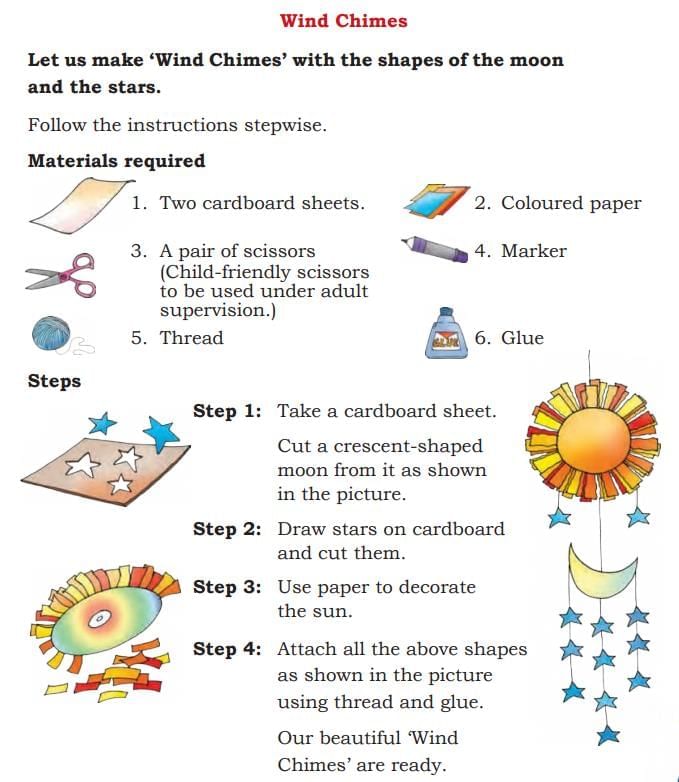
|
36 videos|231 docs|30 tests
|
FAQs on Chanda Mama Counts the Stars NCERT Solutions - English for Class 3 (Santoor)
| 1. What is the main theme of "Chanda Mama Counts the Stars"? |  |
| 2. How does the story introduce children to the concept of counting? |  |
| 3. What messages does the story convey about friendship and companionship? |  |
| 4. In what ways does "Chanda Mama Counts the Stars" stimulate a child's imagination? |  |
| 5. How can parents use this story to enhance their child's learning experience? |  |















